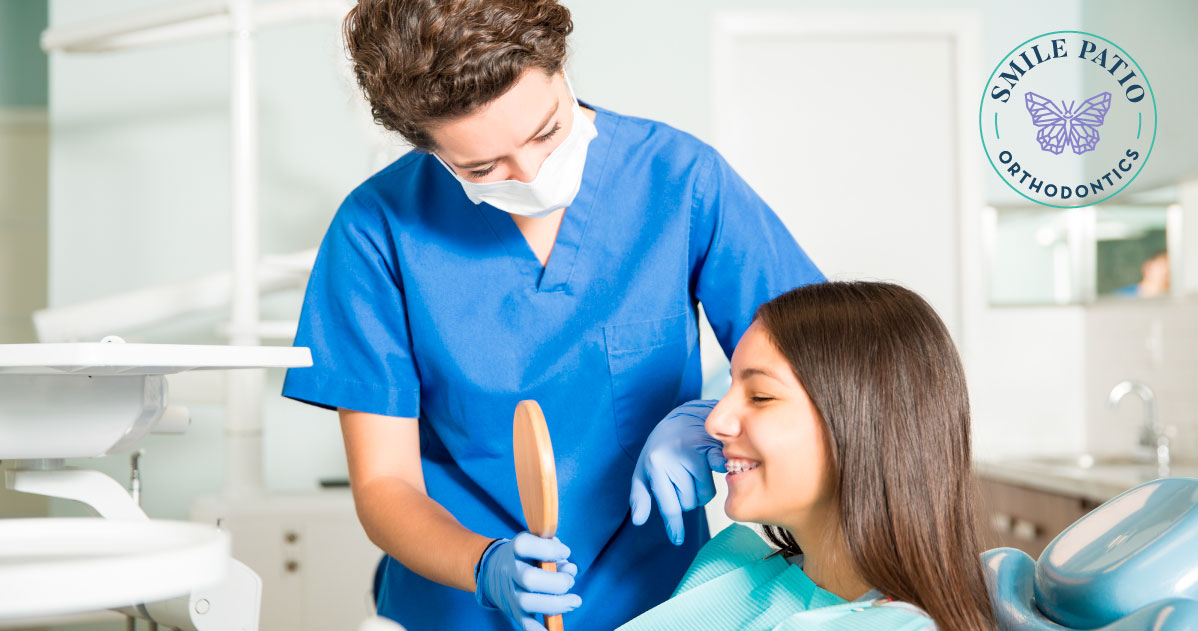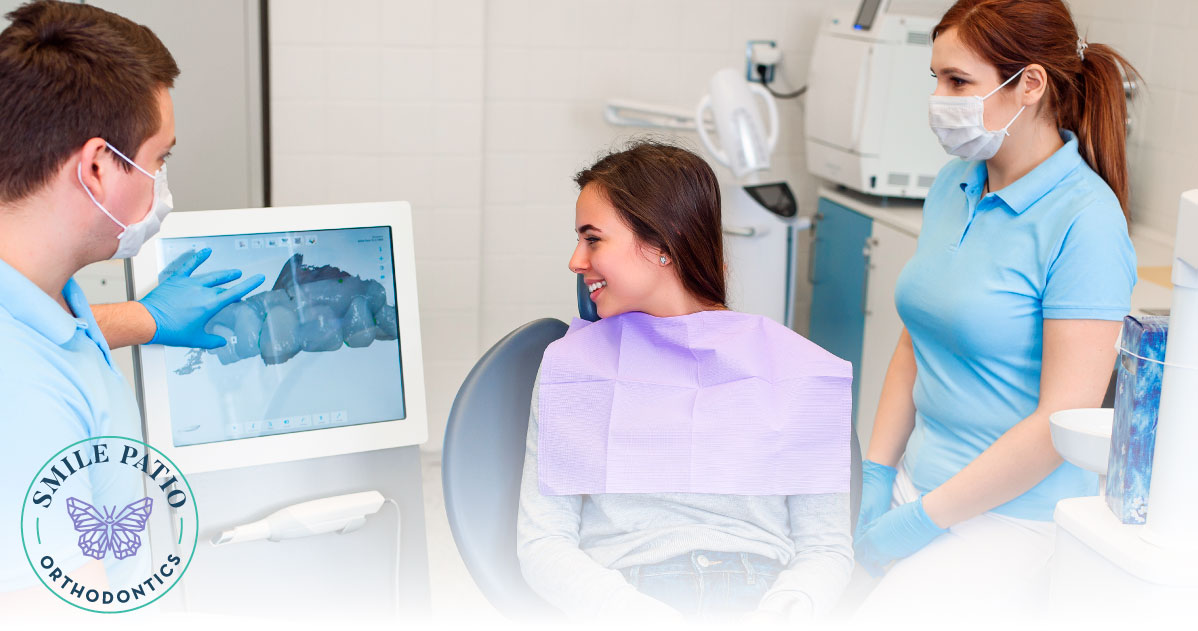Orthodontics is different than dentistry. Orthodontics focuses on the diagnosis, prevention, and treatment of dental misalignment. In some cases, facial irregularities also fall into the specialties of orthodontics.
It primarily involves aligning and positioning teeth and jaws to enhance aesthetics and health. With the help of various orthodontic appliances such as traditional metal braces, clear aligners, and retainers, orthodontists work to correct issues such as misaligned teeth, crowded teeth, teeth gaps, and bite problems.
The importance of orthodontics extends beyond simply improving the appearance of a person’s smile. Properly aligned teeth offer numerous benefits that contribute to overall oral health and well-being.
Orthodontic treatment not only addresses current dental concerns but also helps prevent potential oral health in the future. Properly aligned teeth are less prone to chipping, staining, and other similar dental problems that may arise due to misalignment.
One major benefit of orthodontic treatment, and many people ignore this, is improved oral hygiene. Straight teeth are easier to clean and maintain. Proper alignment reduces the likelihood of plaque accumulation in the nooks and crannies of your mouth.
Some malocclusion problems, such as open bites, can cause speech difficulties. Orthodontic treatment helps align the teeth and jaws, resulting in a proper bite. This improves chewing and speech clarity.
Dental malocclusion can cause jaw pain and even headaches or earache due to uneven pressure of the mandible. In such cases, the patient should no longer experience these symptoms after teeth straightening treatment.
Is Orthodontics a Life Changer?
Through its various interventions and treatments, orthodontics has the potential to positively impact a person’s life in numerous ways.
From improving oral health and functionality to enhancing self-esteem and confidence, orthodontics can bring about significant transformations. Correcting dental irregularities helps individuals achieve a healthier, more beautiful smile and overall health.
Orthodontics helps reduce bad breath, gum disease, and mandible pain. In some cases, it can significantly change a patient’s facial structure.
What Are the Causes of Orthodontic Problems (Malocclusion)?
Let’s start by defining what is a malocclusion. Dental malocclusion refers to the misalignment or incorrect positioning of the teeth when you have your mouth or jaws closed.
Malocclusion occurs when the upper and lower teeth do not fit together properly, leading to an abnormal bite. It can manifest in different forms, such as overcrowding, gaps (diastema), overbite (protrusion of upper teeth), underbite (protrusion of lower teeth), crossbite (misalignment of upper and lower teeth when biting), or open bite (lack of vertical overlap between the front or back teeth).
Causes of Dental Malocclusions
Several factors can contribute to dental malocclusion, including genetic factors, unusual jaw growth, early loss of primary teeth, bad oral habits like thumb-sucking or tongue thrusting, and certain oral health conditions.
Some patients present overbites or underbites due to genetic factors that determine their facial structure. However, most cases of overbite are a result of bad oral habits like thumb-sucking or the excessive use of a pacifier.
Babies and toddlers can suck their thumbs or recur to pacifiers as long as it stops before they turn 3. After that time, these habits can modify a child’s palate and teeth, therefore creating a facial asymmetry.
The loss of baby teeth, whether it is through an injury or tooth decay, can affect the positioning of future permanent teeth, deriving in crooked teeth or crowded teeth.
Later in life, teens and adults can develop malocclusion problems due to the natural movement of the teeth. Depending on particular circumstances, the result of this natural shifting can be mild to severe.
What Are Orthodontic Issues?
Dental experts classify malocclusions into different types depending on the specific nature of the misalignment.
Each class gathers various issues similar in severity; class I refers to milder problems, and class III refers to more severe cases.
Overcrowding
It occurs when there is insufficient space in the dental arch to accommodate all the teeth properly. This leads to teeth being crowded, rotated, or displaced, resulting in a misaligned appearance.
Overcrowding can make oral hygiene maintenance challenging and may increase the risk of dental issues such as tooth decay and gum disease.
This dental issue falls under Class I malocclusion. A Class I malocclusion refers to cases where the bite is relatively normal, but there are issues with the teeth’ alignment, such as crowding or spacing.
Spacing or Diastema
Spacing refers to gaps or spaces between teeth that exceed the normal range. This occurs when the size of the teeth is smaller in comparison to the available space in the dental arch.
Even though a teeth gap is not a serious problem, it can affect oral functionality.
Doctors consider a teeth gap a Class I malocclusion.
Overbites
Overbites or deep bites have as a main characteristic the vertical overlap of the upper front teeth over the lower front teeth when you close your mouth.
There are mild, moderate, and severe overbites. An overbite occurs when the upper teeth cover too much of the lower teeth. A significant overbite can cause the lower front teeth to bite into the roof of the mouth, leading to potential wear and discomfort.
Because an overbite is a moderate dental issue, it falls into Class II malocclusions.
Underbite
Underbite is the name experts give to cases where lower front teeth protrude beyond the upper front teeth when you close your mouth.
This can result from the lower jaw sitting further forward than the upper jaw. Underbite can affect both the appearance and function of the mandible and bite.
Severe cases of underbite might require surgical intervention and a combination of orthodontics and surgery.
Underbites are Class III malocclusions.
Crossbite
Crossbite refers to a lateral misalignment of the teeth, where some upper teeth sit inside the lower teeth.
A crossbite can present on one side of the mouth (unilateral crossbite) or involve multiple teeth on both sides (bilateral crossbite). Crossbite can negatively affect proper tooth function, jaw development, and facial symmetry.
Depending on the nature of the problem, a crossbite can fall into a Class I or a Class III malocclusion, according to the severity and extent of the crossbite.
Open Bite
Doctors can identify an open bite by a lack of vertical overlap between the upper and lower front teeth. This results in a visible space or gap between the upper and lower teeth, preventing them from making contact.
Having an open bite affects speech patterns, chewing and biting efficiency, and overall aesthetics.
Doctors classify open bites as Class II malocclusions.
What Are the Benefits of Orthodontic Treatment?
Everyone considers the cosmetic benefits of orthodontic treatment because they are evident, but orthodontics offers benefits both from a medical perspective and in terms of cosmetic improvements.
In most cases, undergoing orthodontic treatment is not an option and has nothing to do with appearance, strictly speaking.
Besides the benefits we have already mentioned, these are also important to consider:
Medical Reasons for Orthodontic Braces
All of the orthodontic issues this article mention can find a solution through orthodontic treatment Vista, whether the treatment plan involves orthodontic appliances or dental surgery.
If you are into sports, you may have worn a mouthguard before. Mouthguards protect the teeth from trauma, and so do straight smiles. Aligned teeth are less prone to physical injury.
Following the same line, correcting malocclusion can alleviate temporomandibular joint disorders, which cause jaw pain, headaches, and difficulty when opening or closing the mouth.
Cosmetic Reasons to Get Metal Braces
Orthodontic treatment can dramatically change the appearance of the smile. By straightening teeth, closing gaps, and correcting irregularities, patients can have the globally famous “perfect smile.”
Aligning teeth and correcting issues such as overbites and underbites contributes to achieving facial symmetry, a goal for many.
Of course, due to the significant changes, a few years of orthodontic treatment can boost the self-esteem and confidence of patients, which is no less important.
Are There Real Consequences of Leaving Orthodontic Problems Untreated?
Remember, orthodontic issues are medical issues. Overlooking dental problems for too long is always risky.
Untreated orthodontic problems can contribute to tooth decay, tooth loss, gum disease, enamel erosion, and staining. Since misaligned teeth can be difficult to clean, plaque and bacteria tend to accumulate between them, leading to oral health complications.
Dental problems like having crooked teeth do not correct over time but the opposite. Waiting will most likely waste your time and money.
Why Are More Adults Getting Orthodontic Treatment? – Orthodontics, Vista
Orthodontic care, Vista, CA – Globalization has many perks, and awareness is one of them. There is an increased awareness among adults about the benefits of orthodontic treatment.
More adults now understand that orthodontics is not only for children or a luxury but can also correct their dental concerns and improve their oral health.
In addition, the field of orthodontics has witnessed important advancements in recent years. The availability of new and improved orthodontic techniques, such as clear aligners, lingual braces, and the like, makes treatment more discreet, comfortable, and efficient.
At The Smile Patio, we believe orthodontics is for everyone that needs it. Cutting-edge technologies and attentive care are our goals.
Dr. Albaugh is a top-notch specialist in the area, ready to assess your smile and improve your health.




